-
 Bitcoin
Bitcoin $84,627.8074
-0.67% -
 Ethereum
Ethereum $1,864.2399
-2.65% -
 Tether USDt
Tether USDt $1.0000
0.00% -
 XRP
XRP $2.0927
-2.53% -
 BNB
BNB $598.1054
-1.97% -
 Solana
Solana $124.8602
-1.22% -
 USDC
USDC $1.0000
-0.01% -
 Dogecoin
Dogecoin $0.1690
-2.36% -
 Cardano
Cardano $0.6667
-2.33% -
 TRON
TRON $0.2374
0.13% -
 Toncoin
Toncoin $3.9597
-2.40% -
 Chainlink
Chainlink $13.5353
-4.79% -
 UNUS SED LEO
UNUS SED LEO $9.4239
0.74% -
 Stellar
Stellar $0.2665
-2.47% -
 Avalanche
Avalanche $18.8622
-3.42% -
 Sui
Sui $2.3649
-2.87% -
 Shiba Inu
Shiba Inu $0.0...01245
-2.30% -
 Hedera
Hedera $0.1679
-2.22% -
 Litecoin
Litecoin $85.3854
0.85% -
 Polkadot
Polkadot $4.0835
-2.36% -
 MANTRA
MANTRA $6.3305
-0.14% -
 Bitcoin Cash
Bitcoin Cash $301.8122
-2.65% -
 Bitget Token
Bitget Token $4.5802
-1.17% -
 Dai
Dai $0.9997
-0.03% -
 Ethena USDe
Ethena USDe $0.9998
-0.01% -
 Pi
Pi $0.6674
-5.90% -
 Hyperliquid
Hyperliquid $12.8713
-3.72% -
 Monero
Monero $220.0413
0.58% -
 Uniswap
Uniswap $6.0895
-3.69% -
 Aptos
Aptos $5.2723
-2.31%
What is the "double-spending problem" in blockchain? How is it solved?
Blockchain uses cryptographic hashing, distributed consensus (like Proof-of-Work), and a decentralized network to prevent the double-spending problem—where the same cryptocurrency is spent twice—a critical vulnerability in digital currencies lacking central control.
Mar 19, 2025 at 01:25 am

Key Points:
- The double-spending problem refers to the risk of a single cryptocurrency being spent twice. This is a major challenge in digital currency systems that lack a central authority.
- Blockchain technology solves this problem through a combination of cryptographic hashing, distributed consensus mechanisms, and a decentralized network of nodes.
- Different consensus mechanisms (Proof-of-Work, Proof-of-Stake, etc.) offer varying levels of security and efficiency in preventing double-spending.
- Understanding the double-spending problem and its solution is crucial for comprehending the fundamental security of blockchain-based cryptocurrencies.
What is the "Double-Spending Problem" in Blockchain?
The double-spending problem is a fundamental challenge in digital currency systems. It arises because digital information, unlike physical cash, can be easily copied. A malicious actor could potentially spend the same cryptocurrency twice: once to a legitimate recipient, and then again to a different recipient, effectively stealing the funds from the first transaction. This undermines the entire concept of a secure and trustworthy digital currency. Without a robust solution, the value and utility of any cryptocurrency would be severely compromised.
How Blockchain Solves the Double-Spending Problem
Blockchain technology tackles the double-spending problem using a multi-faceted approach. The core of the solution lies in its decentralized, distributed ledger system. This means that every transaction is recorded on a public, shared ledger replicated across a vast network of computers (nodes).
- Cryptographic Hashing: Each block of transactions is linked to the previous block using cryptographic hashing. Altering any past transaction would require recalculating all subsequent hashes, making it computationally infeasible to tamper with the blockchain’s integrity.
- Distributed Consensus Mechanisms: These mechanisms ensure that all nodes agree on the valid sequence of transactions. The most prevalent is Proof-of-Work (PoW), where miners compete to solve complex mathematical problems to add new blocks to the chain. The first miner to solve the problem gets to add their block, and the network verifies its validity.
- Network Effect: The decentralized nature of the blockchain means there's no single point of failure. Even if some nodes are compromised, the majority of honest nodes will maintain the integrity of the blockchain, preventing fraudulent transactions from being accepted.
Proof-of-Work (PoW) in Detail
PoW is a computationally intensive process that requires miners to expend significant energy and resources to solve cryptographic puzzles. The first miner to solve the puzzle adds the next block of transactions to the blockchain. This process ensures that altering past transactions is extremely difficult because it would require controlling more than 50% of the network's hashing power (a 51% attack). While effective, PoW has drawbacks, such as high energy consumption and potential centralization risks around mining pools.
Alternative Consensus Mechanisms
Besides PoW, several alternative consensus mechanisms exist, each addressing the double-spending problem with different approaches and trade-offs:
- Proof-of-Stake (PoS): In PoS, the right to add new blocks is determined by the amount of cryptocurrency a node holds (its stake). This reduces energy consumption significantly compared to PoW.
- Delegated Proof-of-Stake (DPoS): DPoS allows token holders to vote for delegates who will validate transactions and add blocks. This offers faster transaction speeds and lower energy consumption than PoW.
- Proof-of-Authority (PoA): In PoA, a pre-selected set of validators, often known entities, are responsible for verifying and adding blocks. This mechanism prioritizes trust in the validators over computational power.
- Practical Byzantine Fault Tolerance (PBFT): PBFT is a deterministic consensus algorithm designed for smaller networks. It achieves consensus quickly and efficiently but scales poorly to larger networks.
Transaction Confirmation and the Double-Spending Window
Even with robust consensus mechanisms, there’s a small window of time, known as the "confirmation time," before a transaction is considered irreversible. This is because a malicious actor could theoretically create a competing blockchain with their fraudulent transaction before the legitimate transaction is widely confirmed. However, the probability of this happening decreases exponentially with each additional block added after the legitimate transaction. Most cryptocurrencies consider a transaction sufficiently confirmed after several blocks have been added on top.
The Role of Mining Pools in Preventing Double-Spending
Mining pools are groups of miners who combine their computing power to increase their chances of solving the PoW puzzle. While they enhance mining efficiency, they can also raise concerns about centralization. A large mining pool controlling a significant portion of the network’s hashing power could theoretically attempt a 51% attack. However, the vast majority of pools operate ethically, and the decentralized nature of the blockchain mitigates the risk to a large extent.
Frequently Asked Questions:
Q: Can the double-spending problem ever be completely eliminated?
A: While blockchain technology significantly mitigates the double-spending problem, it cannot be entirely eliminated. The possibility of a 51% attack, though incredibly difficult and expensive, always remains. The effectiveness of the solution depends on the security and decentralization of the specific blockchain network.
Q: How does the number of confirmations affect the security of a transaction?
A: More confirmations increase the security of a transaction. Each additional block added after a transaction makes it exponentially harder for a malicious actor to reverse it. The required number of confirmations varies depending on the cryptocurrency and the risk tolerance.
Q: Are all cryptocurrencies equally resistant to double-spending?
A: No, different cryptocurrencies use different consensus mechanisms and have varying levels of security. The choice of consensus mechanism, network size, and the overall security practices of the cryptocurrency project all contribute to its resistance to double-spending.
Disclaimer:info@kdj.com
The information provided is not trading advice. kdj.com does not assume any responsibility for any investments made based on the information provided in this article. Cryptocurrencies are highly volatile and it is highly recommended that you invest with caution after thorough research!
If you believe that the content used on this website infringes your copyright, please contact us immediately (info@kdj.com) and we will delete it promptly.
- DoubleZero Protocol Launches Validator Funding Round, Targeting Existing Solana, Celestia, Sui, Aptos, and Avalanche Validators
- 2025-04-03 05:05:12
- This Classic Chart Pattern Could Send SUI Price Soaring: Expert Reveals the Key Level
- 2025-04-03 05:05:12
- Bitcoin Pepe (BPEP) is rewriting the rules of DeFi
- 2025-04-03 05:00:14
- The NFT marketplace X2Y2 is indeed scheduled to shut down its operations on April 30, 2025
- 2025-04-03 05:00:14
- Bitcoin's History During Market Turmoil Does Not Necessarily Encourage Its Chances of Success This Time
- 2025-04-03 04:55:12
- Bitcoin (BTC) price rallies by 5.53% as spot bids drive the market's bullish start to Q2
- 2025-04-03 04:55:12
Related knowledge
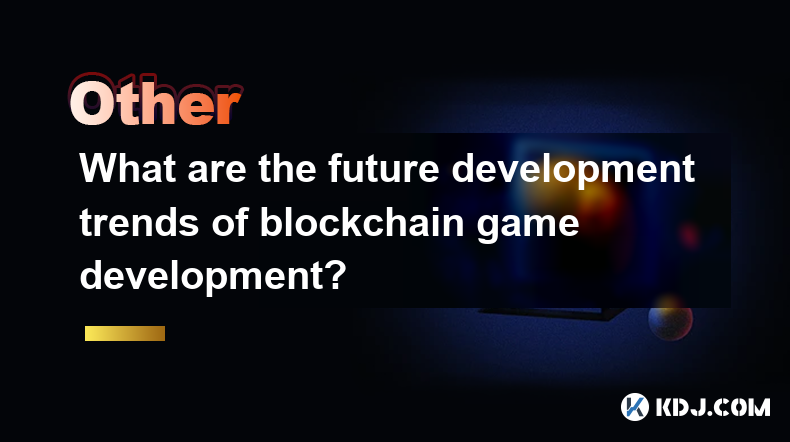
What are the future development trends of blockchain game development?
Apr 03,2025 at 05:00am
Blockchain technology has revolutionized various industries, and gaming is no exception. As we look to the future, several trends are set to shape the development of blockchain games. These trends not only promise to enhance the gaming experience but also to integrate blockchain technology more seamlessly into the gaming ecosystem. Let's explore these t...
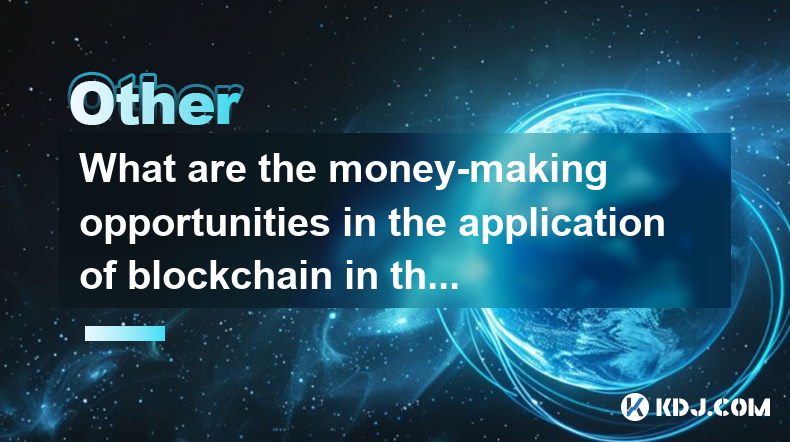
What are the money-making opportunities in the application of blockchain in the medical industry?
Apr 03,2025 at 03:35am
The integration of blockchain technology into the medical industry presents a myriad of money-making opportunities that can revolutionize healthcare systems. Blockchain's inherent characteristics, such as transparency, security, and immutability, make it an ideal solution for various medical applications. By leveraging blockchain, companies can develop ...
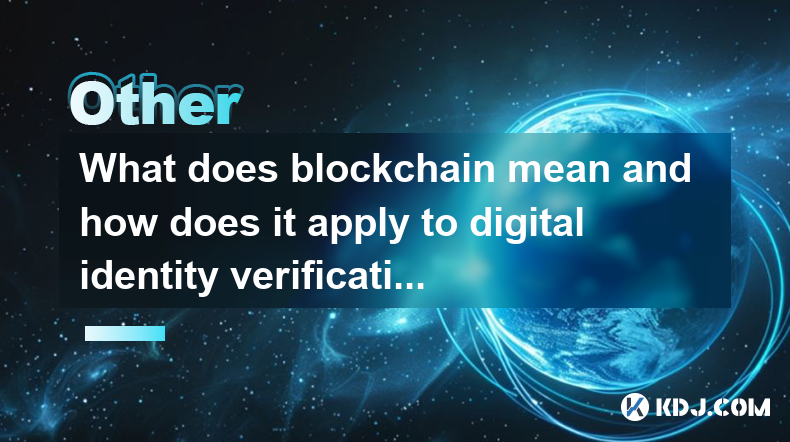
What does blockchain mean and how does it apply to digital identity verification?
Apr 03,2025 at 02:21am
Blockchain technology, at its core, is a decentralized and distributed digital ledger used to record transactions across numerous computers. This ensures that the recorded data cannot be altered retroactively without the alteration of all subsequent blocks and the consensus of the network. The concept of blockchain was initially devised for the digital ...
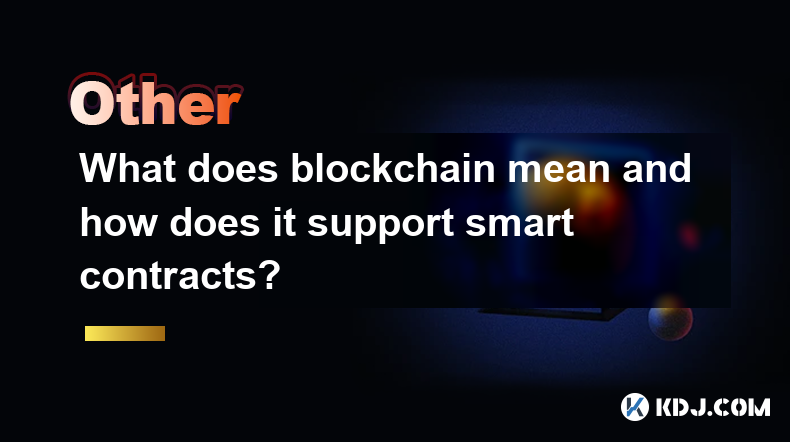
What does blockchain mean and how does it support smart contracts?
Apr 03,2025 at 02:28am
Blockchain technology is a decentralized, distributed ledger that records transactions across numerous computers. It ensures that once data is recorded, it cannot be altered retroactively without the alteration of all subsequent blocks and the consensus of the network. This technology is the backbone of cryptocurrencies like Bitcoin and Ethereum. Blockc...
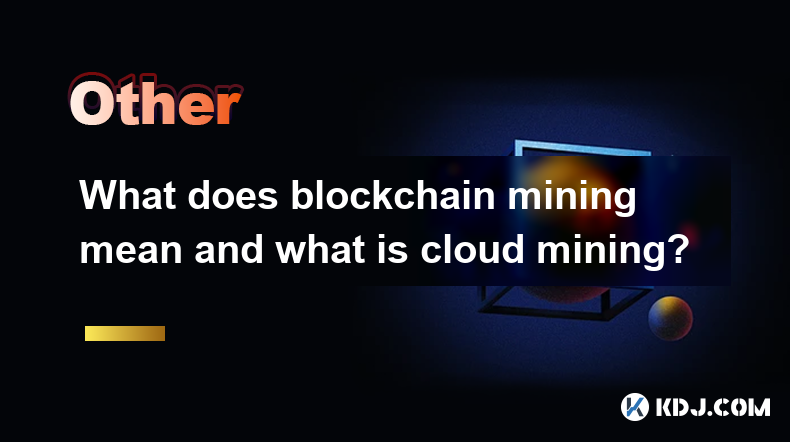
What does blockchain mining mean and what is cloud mining?
Apr 03,2025 at 02:01am
Blockchain mining is the process by which new transactions are verified and added to the blockchain ledger. It involves solving complex mathematical problems using computational power, which results in the creation of new cryptocurrency units as a reward. Miners compete to solve these problems, and the first one to find the solution gets to add a new bl...
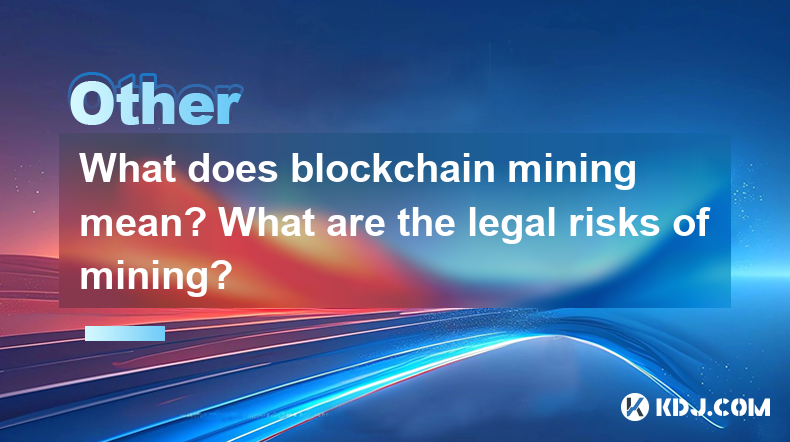
What does blockchain mining mean? What are the legal risks of mining?
Mar 31,2025 at 05:07pm
Blockchain mining is the process by which transactions are verified and added to the public ledger, known as the blockchain. Miners use powerful computers to solve complex mathematical problems, which, once solved, allow them to add a block of transactions to the blockchain. In return, miners are rewarded with cryptocurrency, typically Bitcoin. This pro...

What are the future development trends of blockchain game development?
Apr 03,2025 at 05:00am
Blockchain technology has revolutionized various industries, and gaming is no exception. As we look to the future, several trends are set to shape the development of blockchain games. These trends not only promise to enhance the gaming experience but also to integrate blockchain technology more seamlessly into the gaming ecosystem. Let's explore these t...

What are the money-making opportunities in the application of blockchain in the medical industry?
Apr 03,2025 at 03:35am
The integration of blockchain technology into the medical industry presents a myriad of money-making opportunities that can revolutionize healthcare systems. Blockchain's inherent characteristics, such as transparency, security, and immutability, make it an ideal solution for various medical applications. By leveraging blockchain, companies can develop ...

What does blockchain mean and how does it apply to digital identity verification?
Apr 03,2025 at 02:21am
Blockchain technology, at its core, is a decentralized and distributed digital ledger used to record transactions across numerous computers. This ensures that the recorded data cannot be altered retroactively without the alteration of all subsequent blocks and the consensus of the network. The concept of blockchain was initially devised for the digital ...

What does blockchain mean and how does it support smart contracts?
Apr 03,2025 at 02:28am
Blockchain technology is a decentralized, distributed ledger that records transactions across numerous computers. It ensures that once data is recorded, it cannot be altered retroactively without the alteration of all subsequent blocks and the consensus of the network. This technology is the backbone of cryptocurrencies like Bitcoin and Ethereum. Blockc...

What does blockchain mining mean and what is cloud mining?
Apr 03,2025 at 02:01am
Blockchain mining is the process by which new transactions are verified and added to the blockchain ledger. It involves solving complex mathematical problems using computational power, which results in the creation of new cryptocurrency units as a reward. Miners compete to solve these problems, and the first one to find the solution gets to add a new bl...

What does blockchain mining mean? What are the legal risks of mining?
Mar 31,2025 at 05:07pm
Blockchain mining is the process by which transactions are verified and added to the public ledger, known as the blockchain. Miners use powerful computers to solve complex mathematical problems, which, once solved, allow them to add a block of transactions to the blockchain. In return, miners are rewarded with cryptocurrency, typically Bitcoin. This pro...
See all articles
























































































